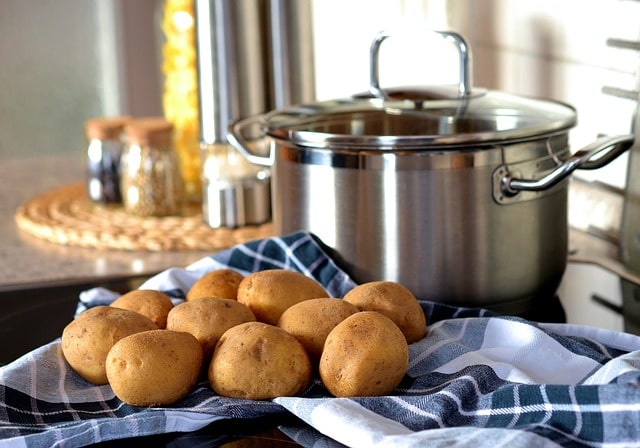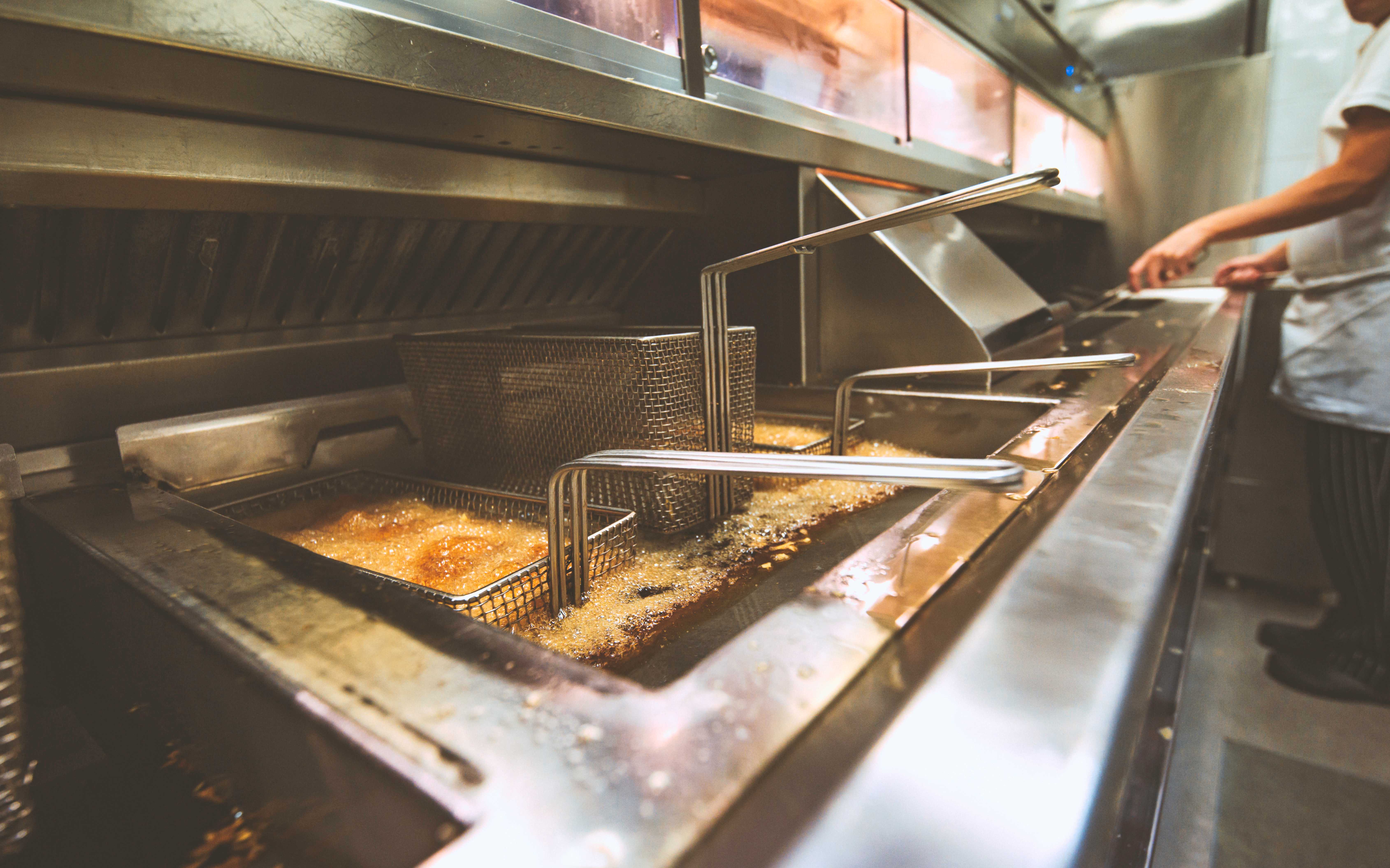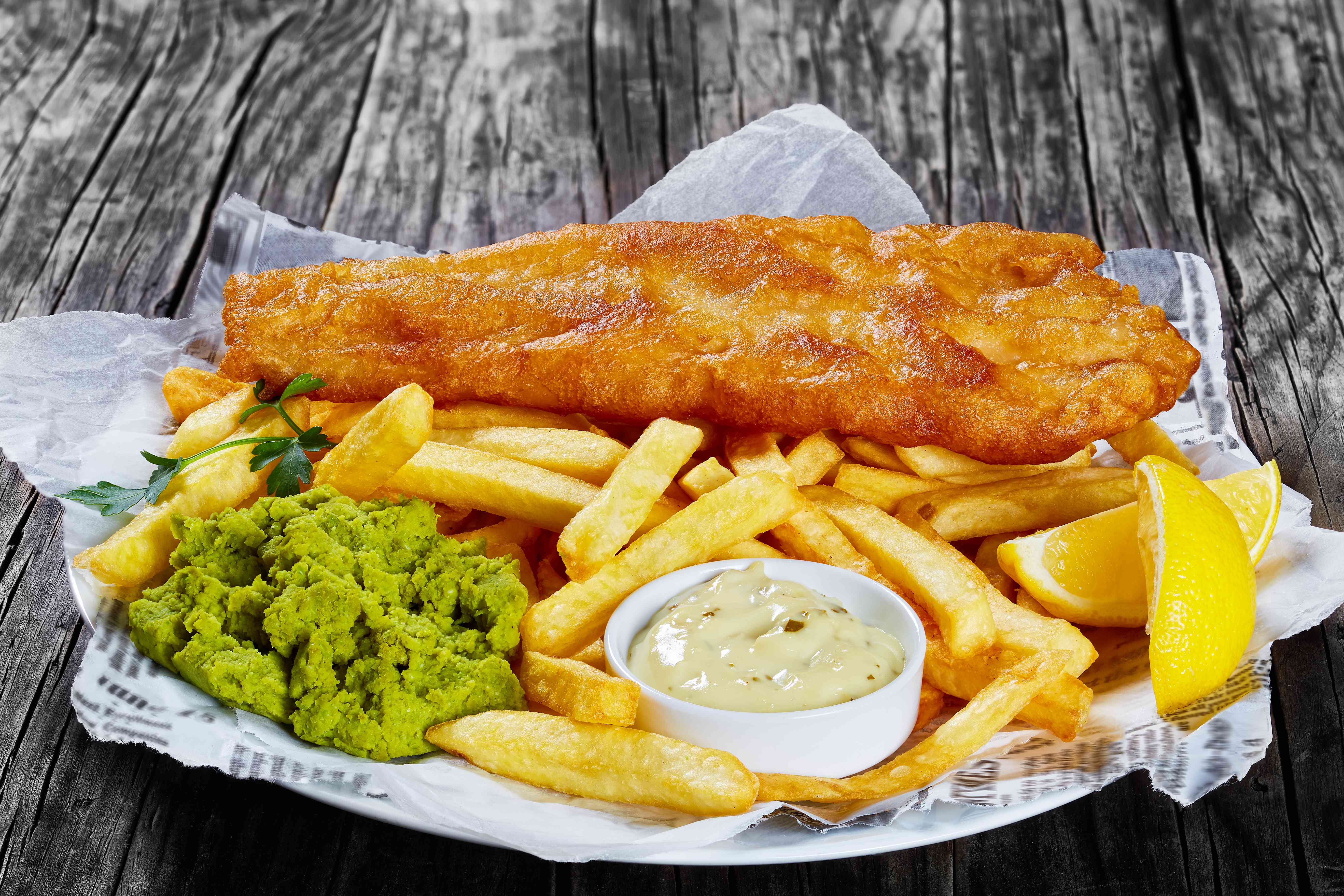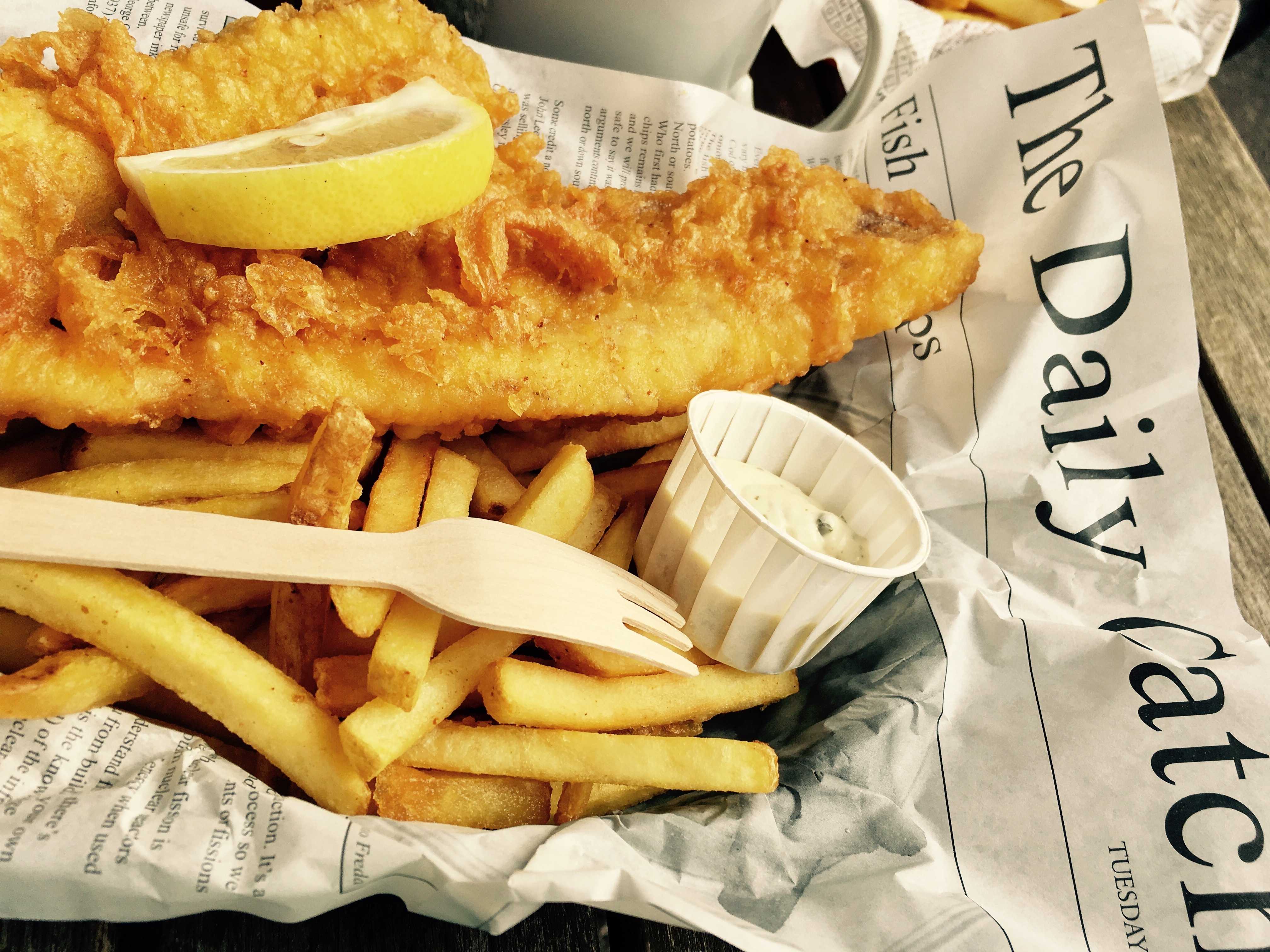Once you cut or peel a potato, the flesh will start to brown. This is a completely natural process, but it doesn’t look very appetising! If you are making roast potatoes, potato salad, or chips, you’ll want to keep them looking a fresh, creamy white. Here are simple, easy solutions on how to keep cut potatoes from turning brown.
Why do potatoes turn brown after peeling or cutting them?
The skin of the potato protects the flesh from coming into contact with the air. Once this protective covering is removed, the starch in the potato begins to oxidise, which causes that browning or greying effect. The potatoes are still completely safe to eat if they oxidise but preventing it will keep them looking fresh and tasty.
Ways to keep cut potatoes from turning brown
Here are some easy, proven methods for keeping your cut potatoes looking their best! They work on white potatoes, russet, and sweet potato varieties.
1 – Prepare potatoes last
The less time your potatoes are exposed to the air, the better. So try to always prepare your potatoes just before you start cooking with them. Other vegetables don’t tend to brown, so prepare those first. Then, as soon as you are ready to start boiling, frying, roasting, or steaming your spuds, quickly peel them and begin cooking.
2 – Submerge your cut potatoes in water
As you peel and slice your potatoes, place them in a bowl of clean, cool water. This slows down the oxidisation process quite a lot, which is very helpful if you need to prepare plenty of spuds or prepare your dish in advance. You can store your potatoes this way for up to 24 hours with minimal discolouration. The key is to put them in the water as soon as you finish cutting them, as every minute counts. Make sure the water is covering them well and place the bowl with the potatoes in the refrigerator if you want to use them more than an hour later. When you’re ready to use them, rinse them under running water to remove any excess starch (helping to make crispier roast potatoes and chips) and pat dry before placing them in hot oil to avoid dangerous spitting.
3 – Add an acid
While water slows oxidation, it doesn’t stop it completely. So, if you want to prepare your potatoes and store them for 6 hours or longer, it’s recommended that you add some acidity to the water. This lowers the pH of the water and stops the chemical process from taking place. Of course, you can spray each potato with a little lemon juice or white vinegar, but if you don’t want to flavour your potatoes, simply add about 1 teaspoon of lemon juice or white vinegar to about 2 litres of water.
4 – Add Vitamin C
If you are grating potatoes, making potato pancakes, potato kugels, or doing any intensive preparation of the potato where it’s going to be exposed to the air for longer while you work, mix in a little ascorbic acid (Vitamin C) into your mixture. You can either crush up a small Vitamin C tablet, melt it in some water, and add it to your mixture, or you can add some lemon juice. This is also a great way to whiten potatoes that have turned a little brown already!
5 – Use a glass or ceramic baking dish
Oxidisation is a chemical process and certain materials can make this process faster or slower. As we’ve mentioned, lemon juice and Vitamin C can slow down or even reverse oxidisation – but metal dishes can accelerate it. Rather than using cast iron, aluminium, or other metal containers for your potatoes, cook them or serve them in a glass or ceramic dish.
6 – Vacuum pack
Because contact with the air is what starts the oxidisation of the starch, you can use a barrier method like submerging the potatoes in water, or vacuum sealing them. Simply peel and cut up your potatoes, place them in a plastic bag, and use a vacuum seal to suck out all the air. You can then store the potatoes in your refrigerator for a few days or even a week before using them and they should be fresh and white.
7 – Keep the skins on – Go rustic!
Keep your spuds protected and prevent them from going brown by keeping the skin on whenever possible. The great thing is that this is a healthy way to eat potatoes, as the skin is where lots of the nutrients, fibre, vitamins, and minerals are. The skins have a high amount of potassium and iron in them too, which supports a healthy metabolism and blood supply. This technique is perfect for new potatoes, but any variety can be cooked with the skin on. It adds a lovely flavour and texture to jacket/baked potatoes, chips, wedges, and potato salads.
Do cooked potatoes go brown?
No. Once the starch is cooked, the potato won’t go brown even if it is exposed to air for a while. If you have lots of potatoes that need to be used up, the best option is to peel and cube them, then cook them and freeze them in portions. Mashed potato and boiled potatoes do especially well in the freezer, and you can even freeze chips and roast potatoes.
Remember to date-label in the freezer
Get the tastiest and best-looking chips and roast potatoes with the right cooking oil
When you’re roasting potatoes or making chips, you need a high-quality oil that will make your potatoes crispy and golden, showing off their distinctive flavour and creamy flesh. Frymax supplies trans-fat-free, certified sustainable palm oil to chippies, restaurants, and the hospitality industry. With superior quality single sourced RSPO palm oil, we’re committed to helping you create a more sustainable, ethical, and healthier world. For more information don’t hesitate to get in contact with the helpful Frymax team.
Become a Frymax member today to gain access to exclusive content, expert frying advice and the chance to enter our fantastic competitions.






